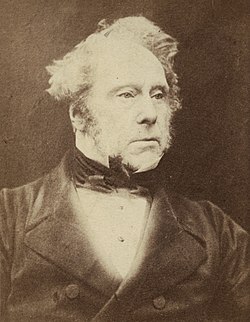| |||||||||||||||||||||||||||||||||||||
All 654 seats in the House of Commons 328 seats needed for a majority | |||||||||||||||||||||||||||||||||||||
|---|---|---|---|---|---|---|---|---|---|---|---|---|---|---|---|---|---|---|---|---|---|---|---|---|---|---|---|---|---|---|---|---|---|---|---|---|---|
| Turnout | 716,552 | ||||||||||||||||||||||||||||||||||||
| |||||||||||||||||||||||||||||||||||||
 | |||||||||||||||||||||||||||||||||||||
 Composition of the House of Commons after the election | |||||||||||||||||||||||||||||||||||||
| |||||||||||||||||||||||||||||||||||||
The 1857 United Kingdom general election was held between 27 March 1857 to 24 April 1857, to elect members of the House of Commons, the lower house of Parliament of the United Kingdom. The Whigs, led by Lord Palmerston, won a majority in the House of Commons as the Conservative vote fell significantly. The election had been provoked by a vote of censure in Palmerston's government over his approach to the Arrow affair which led to the Second Opium War.
Contents
There is no separate tally of votes or seats for the Peelites. They did not contest elections as an organised party but more as independent Free trade Conservatives with varying degrees of distance from the two main parties.
According to A. J. P. Taylor:
- The general election of 1857 is unique in our history: the only election ever conducted as a simple plebiscite in favour of an individual. Even the "coupon" election of 1918 claimed to be more than a plebiscite for Lloyd George; even Disraeli and Gladstone offered a clash of policies as well as of personalities. In 1857 there was no issue before the electorate except whether Palmerston should be Prime Minister; and no one could pretend that Palmerston had any policy except to be himself. [1]


